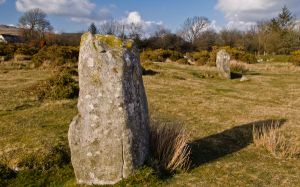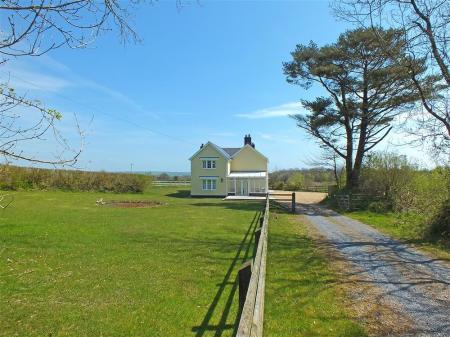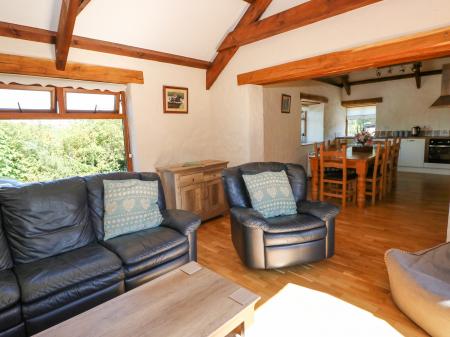
The circle is a curious mix; half the stones are bluestone, while the remainder are local glacial erratics. Near the circle are two outlying stones 134 metres away, which seem to align with the Carn Menyn rockface in the distance; the place where the Stonehenge bluestones are thought to have been carved from the rock.
If the outliers intentionally align with the quarrying place of the sacred bluestones, then perhaps Gors Fawr is a ceremonial site, marking the route taken by people transporting the bluestones to Stonehenge. The outliers are also said to align with the midsummer sunrise.
There is some suggestion that a stone avenue once led to the outlying stones, though it is hard to see any evidence to support this from the ground. One of these outlying stones is known locally as the Dreaming Stone.
The circle dates to the late Neolithic or early Bronze Age, and it is not really a circle but an elongated oval. The stones are relatively small, from 1 to 1.5 metres high.
Visiting
Access is very easy. There is parking in a layby along the road, and a public footpath leads to the site. I was actually impressed with Gors Fawr; not for the size of the circle, but the beauty of the location on an open moor, and its possible connection to the Preseli source of the bluestones. Was Gors Fawr just part of a larger sacred landscape?








